For some the forest is a scary place; for some it is a magical one; and for others it is spiritual. For wildlife it is a popular place. There are many places to shelter and plenty of food. Though the forest of our barrier islands is not as dense and dark as those of the west coast of the United States or the mountains of Appalachia, it is very wooded provides the same needs. Much of the wildlife on our islands call this part home. Even if they forge in the dunes, or on the beach, it is the forest where they reside.

Photo: Rick O’Connor
I have hiked through many of these maritime forests. The northern terminus of the Florida Trail ends at the edge of a maritime forest on Santa Rosa Island. They are populated by many of the same species of trees you would find in inland forest. Pine, Oak, and Magnolia are all common. In some locations they short and twist their branches in all sorts of patterns to avoid direct exposure to the salt spray from the Gulf. Those more protected from the spray by large dune fields grow quite tall. Small rolling dunes of quartz sand can still be found on the forest floor, as can palms and palmettos, holly trees, and species of shrubs found in the dune fields themselves. All of these provide good shelter, and some provide food. And, as with the American southwest, these xeric conditions support cactus – there are plenty of cactus in the tertiary dunes and maritime forest of our islands. Covered toed shows are recommended when hiking here.
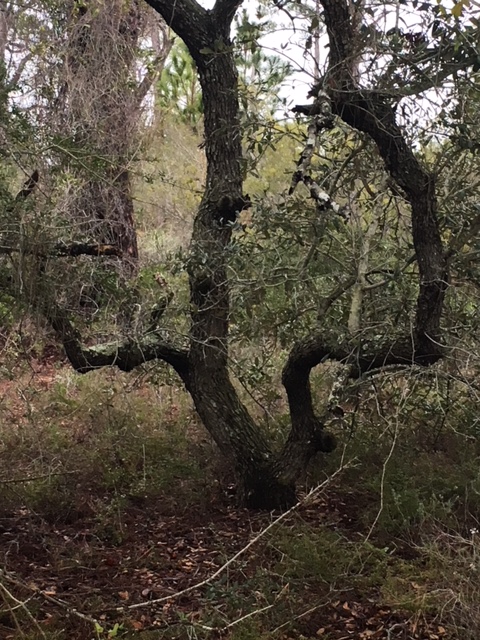
Photo: Rick O’Connor
Though not common, within these forest there are small ponds of freshwater. Back in the 1950s there was an attempt to build a pompano hatchery within the forest of Santa Rosa Island. It failed because the water they chose to use (groundwater) was fresher than they thought it would be. Visiting the site today you will find the grow out ponds the farmers dug, full of freshwater. Near Ft. Pickens, on the west end of Santa Rosa Island, there are moats the soldiers dug to protect the fort from attack. These too are filled with freshwater. Between these and the naturally occurring ones, there is habitat for fish. The few samples I have collected over the years have yielded live bearers, like mosquitofish and mollies, and as well members of the killifish family. There could be others, but I have not explored this enough.
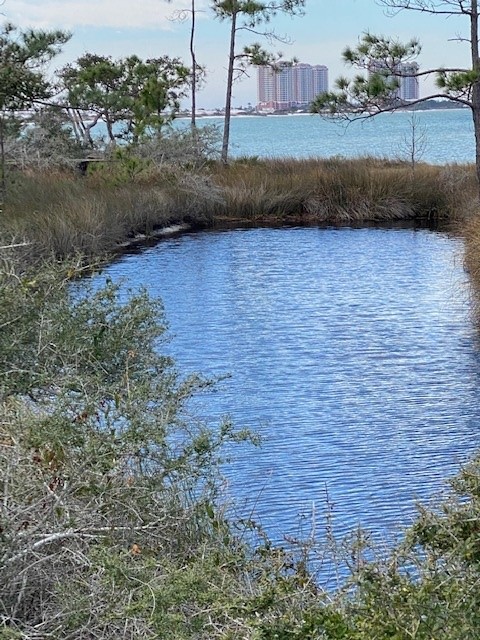
It is also good habitat to support frogs. I have seen southern leopard frogs and southern toads, and have heard spring peepers on the islands, but I have not conducted formal surveys to determine what other species might exist. There are inland species that do well in dry sandy soils, and you would think would do well on barrier islands if they could reach them. Maybe some have, again – we need to conduct a good survey. I am not aware of any salamanders on these islands, but again I have not looked for them.

This is the realm of the reptile. As with the deserts of the American southwest, reptiles do very well in dry xeric conditions. Snakes and lizards seem to be the most abundant. Six lined racerunners are quite common, as are other species of skinks (if you look for them in hiding places). The horned toad was once common in all sandy environments in Pensacola, but then were only found on the barrier islands, and now are hard to find there. They are reported to still be found on Santa Rosa Island though I have not seen one in years. One of my colleagues recently saw one on Perdido Key – so, they are still around.

Photo: Rick O’Connor
With snakes, the southern black racers and their close cousins the eastern coachwhip are very common here. I have found garter and ribbon snakes. I have seen the rough green snake in the maritime forest, usually in the branches. I have found both the cottonmouth and the banded water snake near the freshwater ponds. The denser forested areas have a lot of leaf litter on the floor that could support the eastern coral snake. Though I have never seen one on the islands, they could be – they are very secretive. One of the more common snakes – found in all habitats of the barrier island – is the eastern rattlesnake. Encounters with impressive creature is rare. Most of mine have been near the campgrounds and after hurricanes when the National Seashore was closed. When FIRST opened to the public, you see them, then they just disappear.
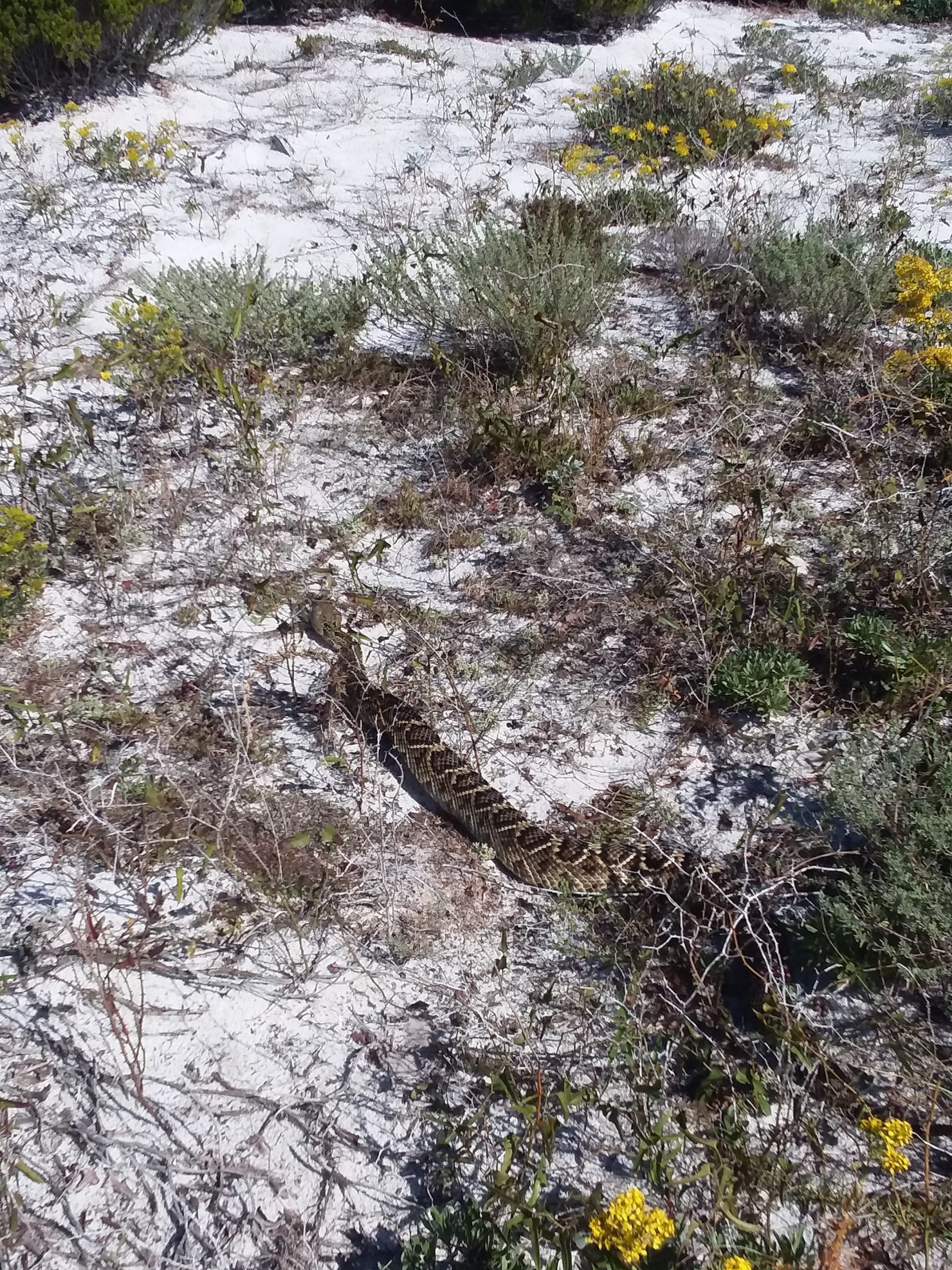
Photo: Bob Pitts
Alligators are known to haunt the freshwater ponds; I have seen them near the old pompano hatchery. I have seen photographs of them crossing the island, swimming across the intracoastal waterway, and even swimming in the Gulf! But sightings and encounters on our end of the panhandle are rare.
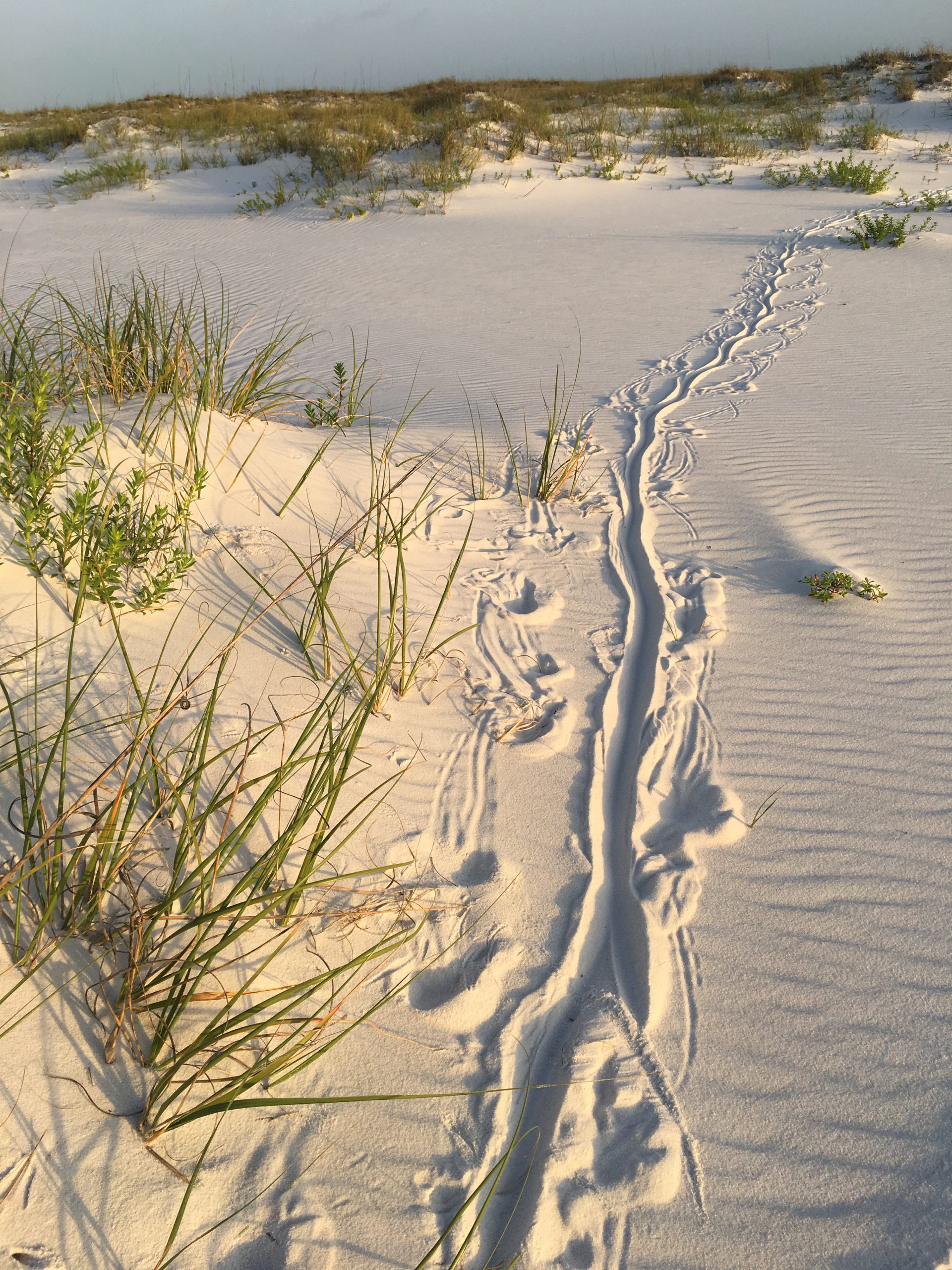
Photo: Caroline Harper
Birds have no problem reaching barrier islands and they love forested areas. There are numerous species of songbirds (passerines). I have seen cardinals, blue jays, mockingbirds, and more. Many of the ones you find just across the intracoastal can be found here. Mourning doves are quite common in all habitats. The forested areas are where you encounter the raptors. I have seen osprey, bald eagles, and great horned owls all nesting here. Within the pines of the forest, you often see the great blue herons nesting. There are other occasional aquatic birds visiting the ponds, including ducks. Duck hunting still happens in the winter on some islands. These barrier islands are popular places to conduct the Audubon Christmas Bird Counts.

Photo: Rick O’Connor
And there are plenty of mammals. Though more crepuscular or nocturnal, you often find their tracks in the sand in the morning, and occasional see them. Raccoons and armadillos are abundant, not only in the forested areas, but all island habitats. Skunks were once very common in the maritime forest. I remember days camping at Ft. Pickens when they would approach you eating lunch knowing you were going to leave you food and move away! We encountered them frequently while hiking and saw them inside some of the fortifications. Then… in 2004… Hurricane Ivan rolled over Santa Rosa Island. A study conducted by LSU suggested the entire west end of the island may have rolled over 300 feet north that night. Since then, I have not seen a skunk. They may still be out there, but I have not seen one.

In recent years there have been more encounters with river otters. They may have always been there but recently more tracks, and more encounters with live animals have occurred. There are squirrels and mice, out there. I have seen deer, fox, and coyotes on the islands. I have heard there are black bears. I have never seen one, nor their tracks, but know they have been encountered a lot recently in coastal Santa Rosa County and also know they are good swimmers. So, these reports could be true. I have looked for bats at dusk and have not seen them, but I am sure they are around. Especially near the forts and old live oak trees.
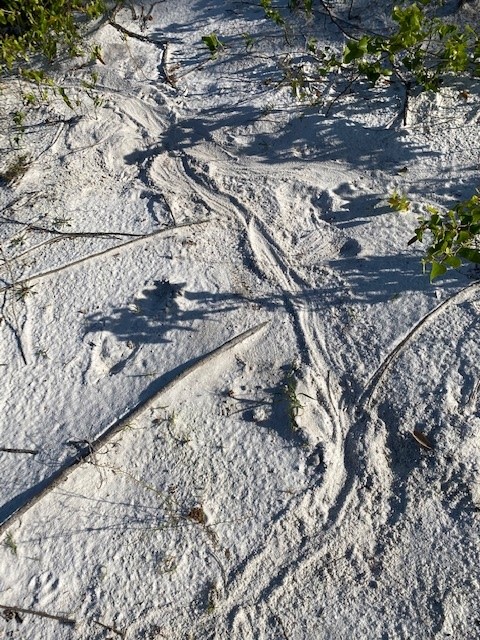
Photo: Rick O’Connor
Time in these maritime forests will yield a lot of wildlife encounters. This is most likely the most diverse location on these islands. I would encourage you to dawn some good hiking boots (waterproof if you can), long pants (the green briar and cactus can be bad), a pair of binoculars, sun protection and water, and explore these amazing forests. Many of them within our state and national parks provide trails for easier access.
We have once last habitat to explore – and that would be the salt marsh. This will be Part 7.
 1
1

